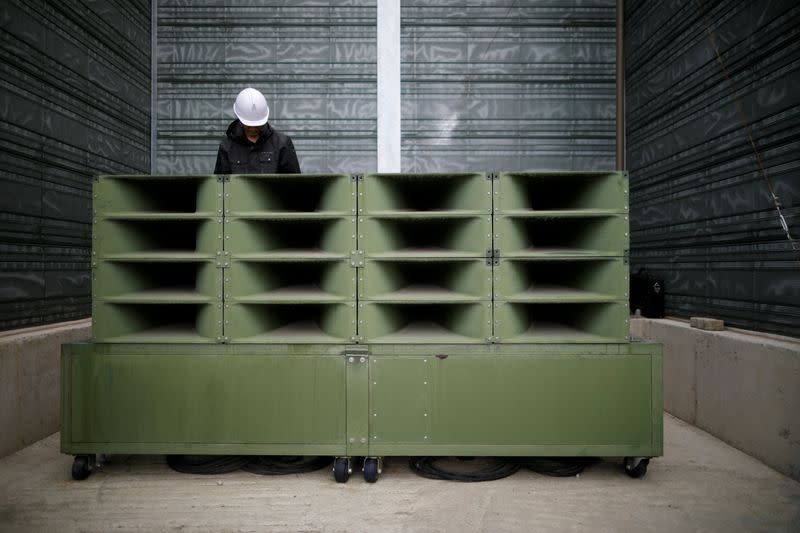Factbox-Psychological warfare and K-pop: South Korea to blast loudspeakers at North Korea

By Jack Kim
SEOUL (Reuters) - South Korea said on Sunday it would resume loudspeaker broadcasts at the border directed at North Korea for the first time in six years as a response to balloon launches by Pyongyang sending trash to the South.
The following are some facts about the broadcasts as tensions once again heighten on the Korean peninsula.
THE SPEAKERS
Up to 24 high-power speakers are stacked in large stationary racks as tall as 6 metres (20 ft)and 3 metres wide and positioned at different locations just south of the barbed wire fence marking the southern edge of the Demilitarized Zone border.
Other units are mobile and mounted on trucks.
South Korea's military operates the speaker system and the broadcasts.
At maximum output, the speakers blast voice and music more than 20 km (12.4 miles) into North Korea, far enough to reach many soldiers and civilians.
WHAT DO THE BROADCASTS ACCOMPLISH?
Former South Korean President Park Geun-hye said in 2016 the loudspeaker broadcasts were "the most effective form of psychological warfare" and they had encouraged North Koreans to risk their lives and defect to freedom in the South.
Defectors who fled the North have backed up the statement.
South Korea's military has called the broadcasts "Voice of Freedom," with four major themes: the superiority of liberal democracy, the history of South Korea's economic success, the justification for reunification and the reality of North Korean society.
World news, commentary on the North's political system and its leader, and weather reports are mixed with K-pop hits, which some North Korean defectors have said left a lasting impression that there were actually songs with no ideological message.
HOW DOES NORTH KOREA REACT?
North Korea considers criticism of its leader Kim Jong Un included in some past broadcasts as an attack against "supreme dignity" and launched an artillery strike across the border.
The broadcasts featured prominently in the joint declaration signed by North Korean leader Kim Jong Un and then-South Korean President Moon Jae-in at a peace summit in 2018.
In the declaration, it was referred to as a "hostile act" and South Korea pledged to cease the operation and dismantle the speakers.
North Korea's military is believed to have conducted a crude operation to interfere with the broadcasts reaching its soldiers and residents by playing its own loudspeakers. They did not have sufficient output to deliver messages that were comprehensible from the South.
(Reporting by Jack Kim; Editing by Kim Coghill)


